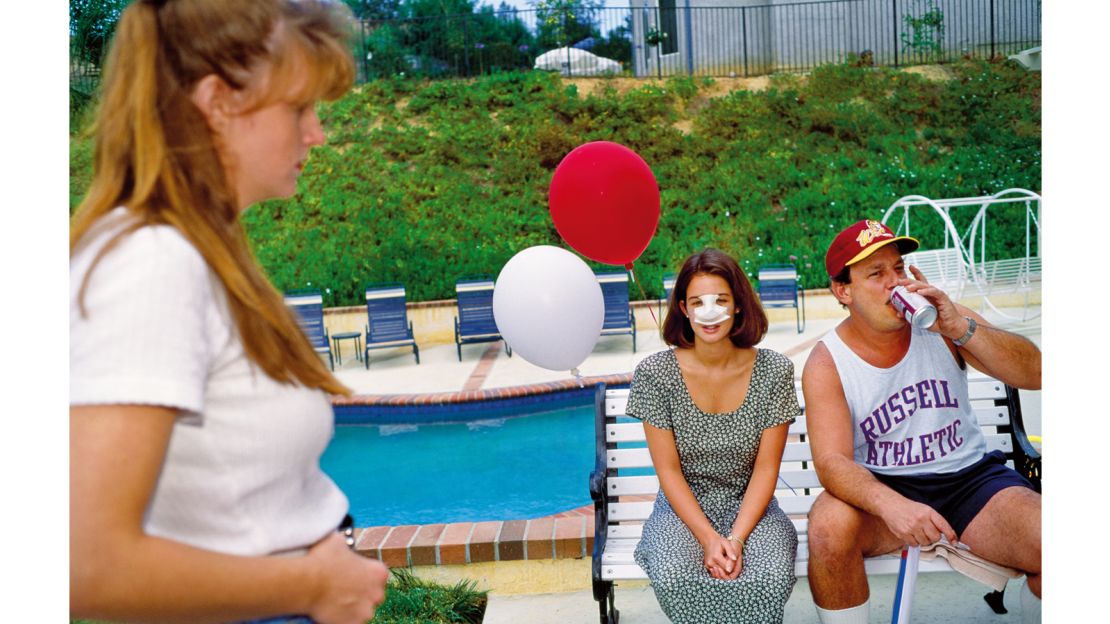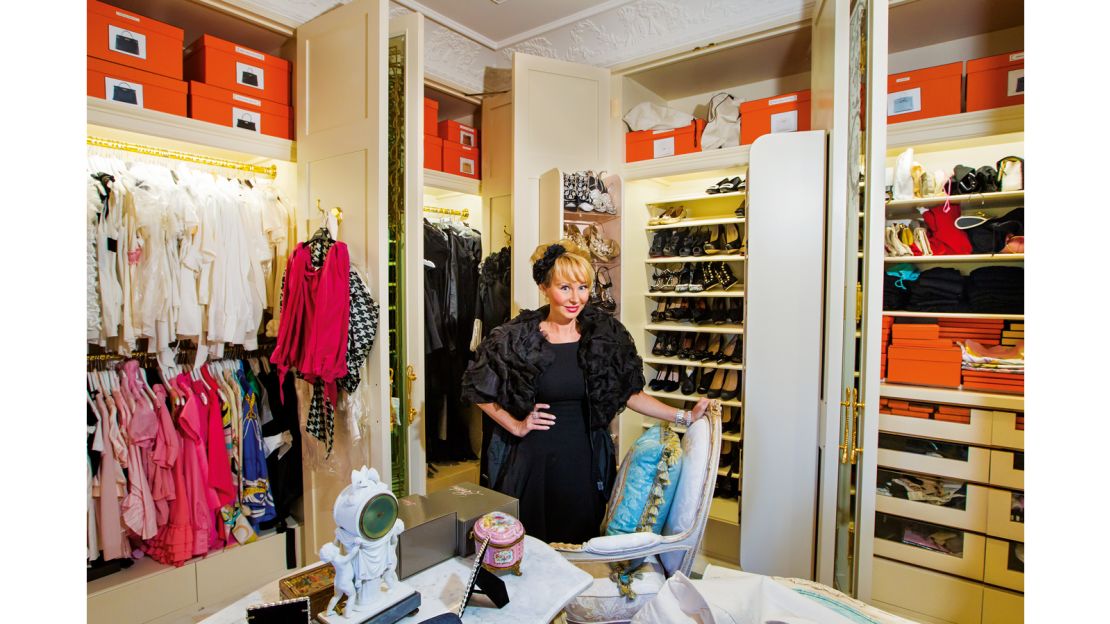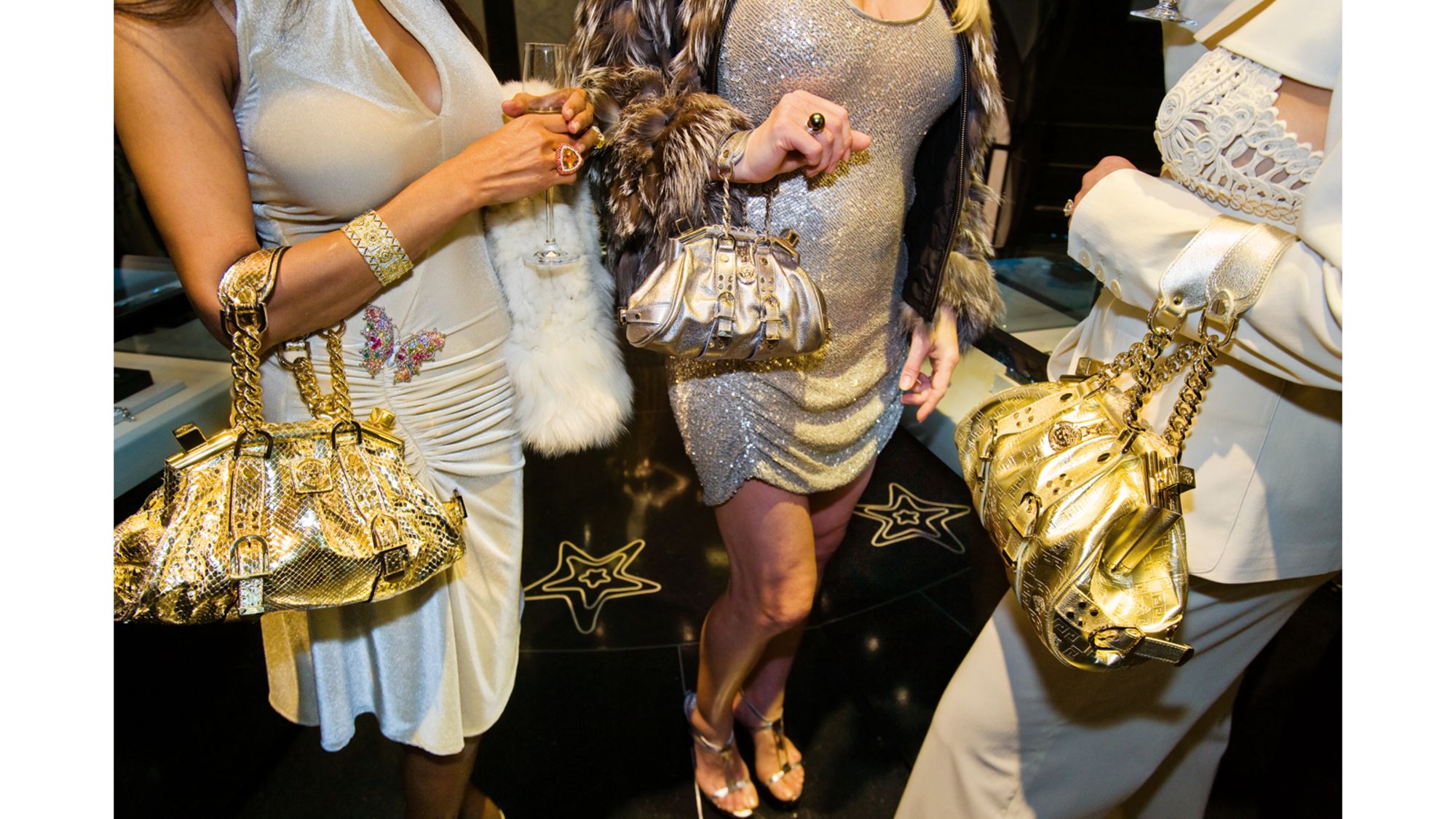It’s a Fourth of July party in 1993. An 18-year-old girl, lost in thought, sits by an aquamarine swimming pool near Los Angeles. A pristine white surgical bandage is slapped across her face, from eyebrow to upper lip. Her name is Lindsey.
“I had wanted to get my nose done since I was twelve,” she reflects. Most of her school friends had already had plastic surgery – breasts reduced or enlarged, fat removed, noses done. We can see from the photograph Lindsey has finally just got her heart’s desire. Three days after surgery, is she happy? It’s hard to tell.
Lauren Greenfield captures 'Generation Wealth'
The Californian photojournalist Lauren Greenfield, who captured this scene, has been documenting the American dream in its all permutations for the last 25 years or so. With a workaholic’s obsession, she has become fascinated by wealth and fame and by what she calls “the influence of affluence” – how people try to ape the way the rich live.
Her output has been prodigious: some 300 photo essays for magazines and newspapers across the extremes of consumer culture: “bling, celebrity and narcissism.”
Her archive of over half a million photos has now been condensed into 600 images in “Generation Wealth,” a 7-pound coffee table book bound seductively in gold silk, and retailing at a hefty $75.
It seems timely. As Greenfield notes dryly in her introduction, “We now live in a society where our highest public servant is a real-estate developer and reality TV star who lives in a penthouse on the sixty-sixth floor emblazoned with his name and decorated in a Louis XIV style, with ceilings painted with 24-karat gold, marble walls, and Corinthian columns.”
‘Partying on the deck of the Titanic’

The book is, frankly, almost too heavy to handle. Greenfield rests it on a table as she flips through its 500 or so pages, pointing out pictures.
Beauty pageant contestant Eden Wood, aged 6, is a diminutive vision in showgirl pink in 2011. Her dresses cost over $3,500. Serendipitously, Greenfield photographed Eden just as she was about to retire from competition (200 titles won) to concentrate on developing a lookalike doll and a reality TV show called “Eden’s World.” (If so inclined, you can check out the 2012 trailer online. “I am Eden Wood, diva!” she squeaks.)
On several pages, Canadian socialite (the American dream gone international), philanthropist and billionaire’s wife Suzanne Rogers, aged 40, is into shoes and Hermes handbags, photographed at home in Toronto in 2010, standing wide-eyed and beaming in her “seasonal” closets. Every shoebox comes with a photo of the shoe inside for easy identification. Suzanne’s style icon (in 2010 at least) was Truly Scrumptious from “Chitty Chitty Bang Bang.” (And who am I to mock? How many men have fantasized about being James Bond, another Ian Fleming creation?)
The men flaunt their wealth in our faces. At a music awards ceremony in Los Angeles in 2004, rapper and record producer Lil Jon bares his teeth, central incisors wrapped in a diamond and platinum grill reportedly worth $50,000.
On holiday in St. Barts, 29-year-old Brett Ratner, director of the “Rush Hour” franchise, looks like he’s just won the lottery, his grin is as wide as the platinum Amex card stuck to his forehead. His buddy fans a thick wad of $100 bills right in front of Greenfield’s lens.
Greenfield says that it wasn’t until the financial crash in 2008 that she realized the underlying theme of her work.
“We had lost our moral compass and were partying on the deck of the Titanic,” she says.
She believes that she’s been documenting a fundamental shift in American society. In the past, Americans used to compare themselves to their neighbors and aspired to the neighbor who had a little bit more. But reality TV has changed all that.
“We now know the characters on TV better than (our) neighbors and aspire to what they have.”
(Inevitably, there’s no escaping the Kardashians. Going through her archive, Greenfield was surprised to discover that she’d taken a photo in 1992 of 12-year-old Kim Kardashian and her 13-year-old sister, Kourtney, at a school dance in Bel Air, Los Angeles. According to Forbes Magazine, “Keeping up With the Kardashians” earned the family $122 million last year alone.)
The reality of riches
Everyone wants a better body, better clothes, a better car, a bigger house, a swimming pool and to live in a gated community in the sunshine of California, Las Vegas and Florida.
A 2017 report from the American Society of Plastic Surgeon revealed that Americans spent $16.4 billion on cosmetic plastic surgery in 2016, up from $9.4 billion in 2005. According to the Census Bureau, in the space of 30 years – 1983 to 2013 – the average American home has expanded from 1,725 square feet to 2,598 square feet, with national mortgage debt totaling $8.63 trillion as of March 31, 2017, according to the Federal Reserve.

Greenfield likens the American housing crisis to “visiting archaeological ruins.” In an arresting image, three college kids hang out by the pool in California’s San Joaquin Valley in 2012. One of them stands in the pool near the deep end – hands in jeans. There’s no water in the pool. He and his friends are renting a repossessed property: a 4,200-square-foot, seven-bedroom mansion, complete with Jacuzzi.
Though Greenfield is more interested in those who aspire to wealth, scattered throughout the book are the inevitable celebrities – Donatella Versace, Karl Lagerfeld, Elton John, Imelda Marcos. In a New York TV studio in 2005, the comedian (and late queen of plastic surgery) Joan Rivers is having her lipstick touched up as she waits to be interviewed by lifestyle guru Martha Stewart.
“Generation Wealth” is also littered with objects of desire: a dust-coated Chrysler Crossfire sports car abandoned at Dubai Airport after the owner apparently fled, a limited edition purse encrusted with Swarovski crystals in the shape of a carton full of McDonald’s fries, and a solid gold toilet in a jewelery store in Hong Kong. This is a loo that people queue to see, apparently in their thousands, and even occasionally use. They like to sit on the throne and take selfies.
I ended our interview by asking Greenfield how widespread she thinks the culture of “generation wealth” has become.
“The reality is right in front of us,” came the blunt reply.
“Generation Wealth” by Lauren Greenfield, published by Phaidon, is out now.









